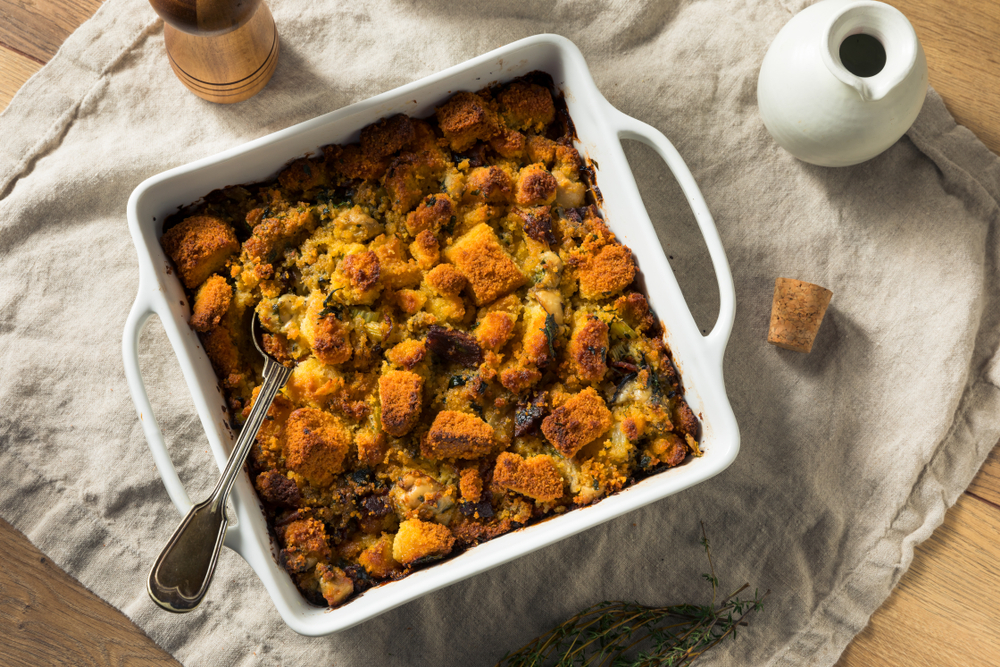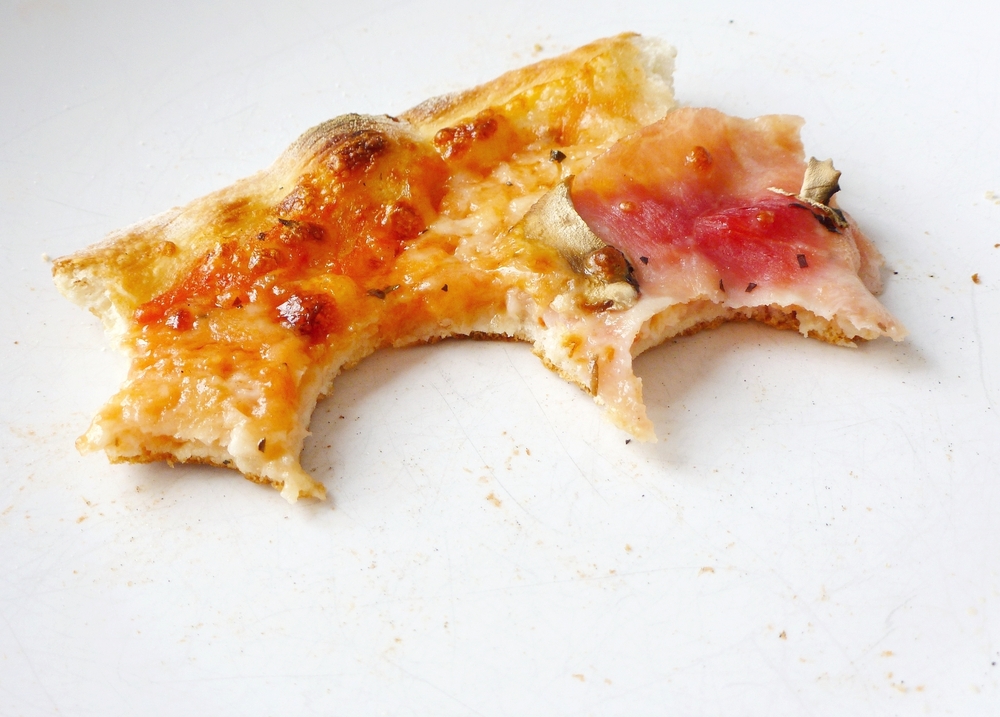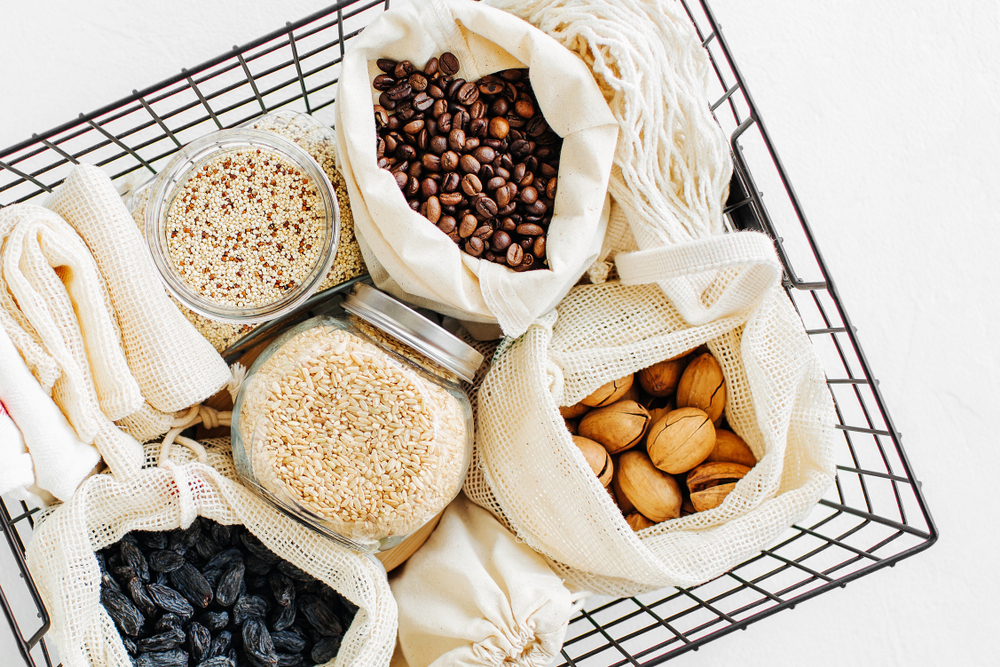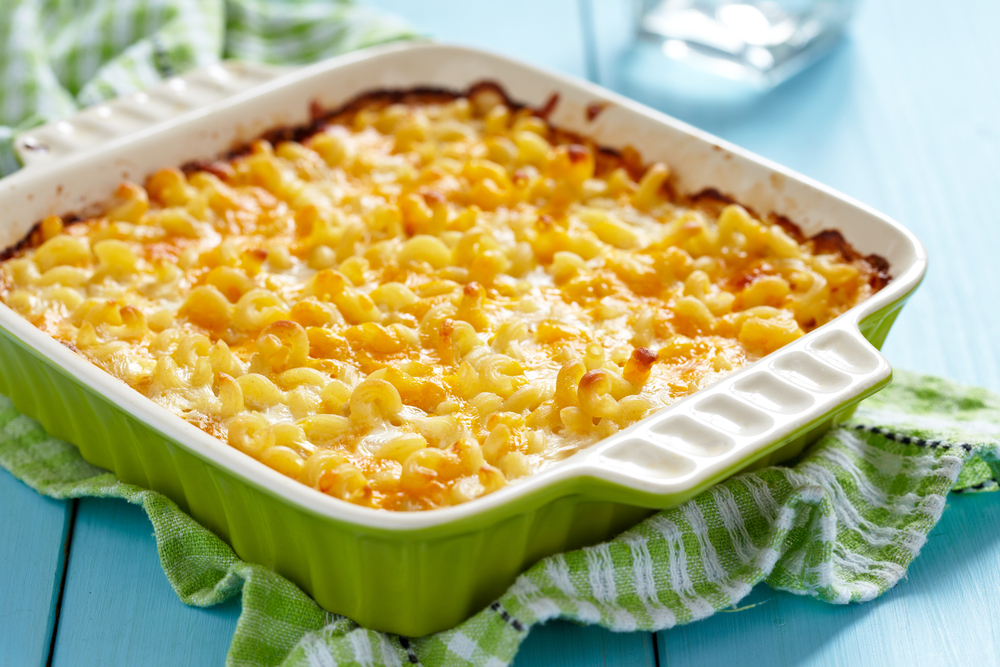As someone who loves Thanksgiving leftovers, I know that reheating frozen stuffing can be a bit tricky. If not done correctly, it can end up dry and flavorless.
But fear not, because I have some tips and tricks to help you reheat your frozen stuffing to perfection.
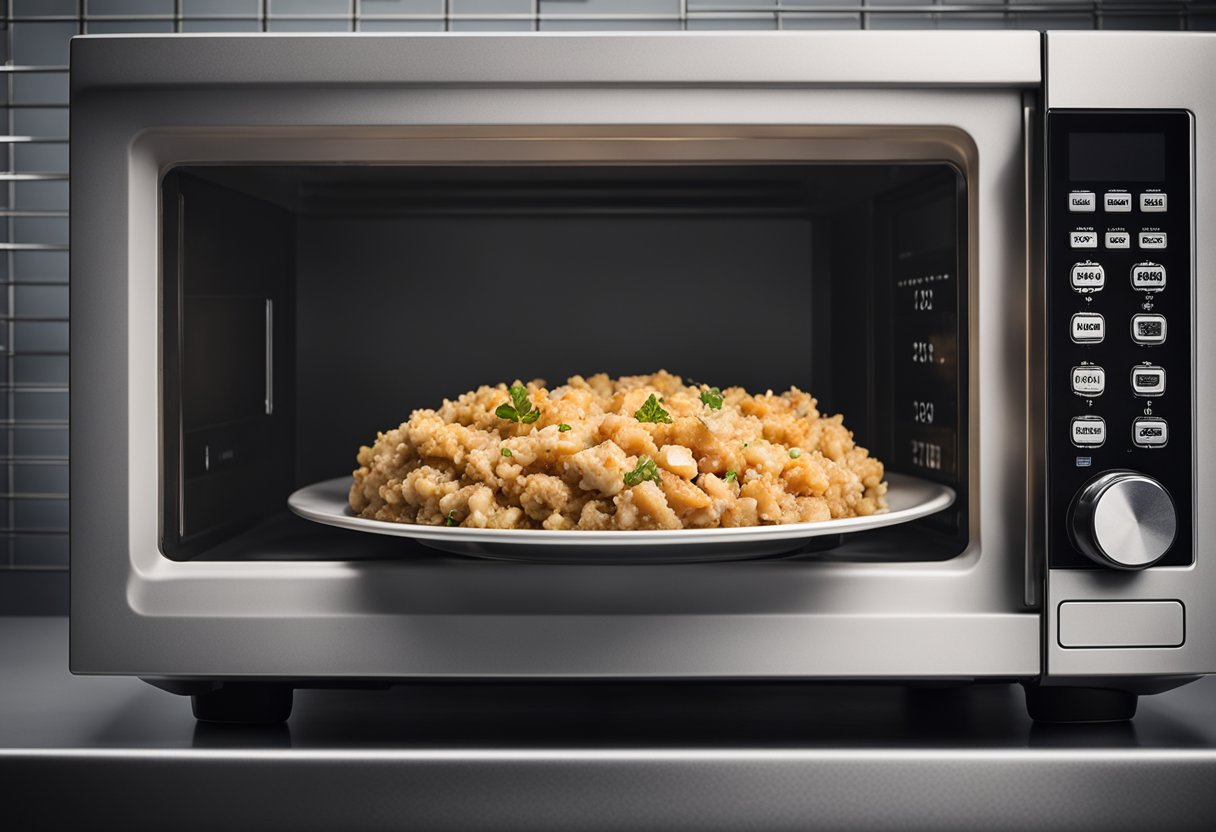
Preparing frozen stuffing for reheating is an essential step that should not be overlooked. Before reheating, it’s important to ensure that your stuffing is properly stored.
Make sure to label and date your container, and store it in the freezer for up to three months. When you’re ready to reheat, remove it from the freezer and let it thaw in the refrigerator overnight.
Now that your stuffing is ready to be reheated, there are a few different methods you can use. The oven is a great option for reheating large batches of stuffing, while the stovetop is perfect for smaller portions.
And if you’re in a rush, the microwave can be a quick and easy option. Let’s explore each of these methods in more detail.
Key Takeaways
- Properly storing frozen stuffing is crucial for successful reheating
- The oven, stovetop, and microwave are all effective methods for reheating frozen stuffing
- Reheated stuffing can be just as delicious as freshly made if done correctly
Preparing Frozen Stuffing for Reheating
As a cooking assistant, I often find myself with leftover stuffing after a holiday feast. Freezing the stuffing is a great way to preserve it for later use.
However, reheating frozen stuffing can be tricky. In this section, I will share some tips on how to prepare frozen stuffing for reheating.
Thawing the Stuffing
Before reheating frozen stuffing, it must be thawed properly. The best way to thaw frozen stuffing is to transfer it from the freezer to the refrigerator. The stuffing should be placed in a covered container and left to thaw in the refrigerator for at least 24 hours.
It is important to note that thawing frozen stuffing at room temperature is not recommended. This can lead to the growth of harmful bacteria, which can cause foodborne illness. Therefore, it is best to plan ahead and thaw the stuffing in the refrigerator.
Adding Moisture to Prevent Dryness
Frozen stuffing tends to lose moisture during the freezing process. Therefore, it is important to add moisture to the stuffing before reheating it.
One way to add moisture to frozen stuffing is to sprinkle it with chicken or turkey broth before reheating. The broth will help to keep the stuffing moist and prevent it from drying out.
Another way to add moisture is to mix in a small amount of melted butter before reheating. The butter will help to keep the stuffing moist and add flavor.
In summary, preparing frozen stuffing for reheating involves thawing it properly and adding moisture to prevent dryness. By following these tips, you can ensure that your reheated stuffing is delicious and safe to eat.
Reheating Stuffing in the Oven
When it comes to reheating frozen stuffing, the oven is one of the best methods to use. Here are the steps to follow:
Preheating the Oven
First, preheat the oven to 350°F (175°C). While the oven is preheating, transfer the frozen stuffing to an oven-safe dish or baking dish.
Using Foil to Retain Moisture
To prevent the stuffing from drying out, cover the dish with aluminum foil. This will help to retain moisture and ensure that the stuffing stays moist and flavorful. Be sure to crimp the edges of the foil tightly around the dish to create a seal.
Achieving a Crispy Top
If you prefer your stuffing to have a golden-brown, crispy top, remove the foil during the last 10-15 minutes of cooking. This will allow the top of the stuffing to brown and become crispy while keeping the inside moist and delicious.
Checking the Internal Temperature
It’s important to ensure that the stuffing has reached an internal temperature of 165°F (74°C) before serving. Use a meat thermometer to check the temperature in the center of the stuffing to ensure that it is fully cooked.
By following these simple steps, you can easily reheat frozen stuffing in the oven to perfection.
Reheating Stuffing on the Stovetop
When it comes to reheating frozen stuffing, using the stovetop can be a great option. Here are a few tips to help you get the best results.
Choosing the Right Pan
When reheating stuffing on the stovetop, it’s important to choose the right pan. A skillet with a lid is a good option, as it will help to keep the stuffing moist and flavorful. You can also add a little bit of butter or oil to the pan to help prevent sticking.
Stirring for Even Heating
To ensure that your stuffing is evenly heated, you’ll need to stir it occasionally. Start by heating the pan over medium heat, then add the frozen stuffing.
Use a spatula or wooden spoon to stir the stuffing every few minutes, making sure to scrape the bottom of the pan to prevent sticking.
As the stuffing heats up, you may notice that it starts to dry out. To prevent this, you can add a little bit of chicken or vegetable broth to the pan. This will help to keep the stuffing moist and flavorful.
Overall, reheating stuffing on the stovetop can be a quick and easy way to enjoy your favorite holiday dish all year round. Just be sure to choose the right pan and stir the stuffing regularly to ensure even heating.
Using the Microwave for Quick Reheating
When it comes to reheating frozen stuffing, using the microwave is a quick and convenient option. Here are two key steps to follow for successful microwave reheating.
Covering with a Microwave-Safe Lid
First, you’ll want to place your leftover stuffing in a microwave-safe dish. Cover the dish with a microwave-safe lid or plastic wrap to help trap in moisture and prevent the stuffing from drying out. Make sure to leave a small vent to allow steam to escape.
Setting the Correct Time and Power Level
Next, set the microwave to the correct time and power level. A good rule of thumb is to microwave on high for 2-3 minutes, stirring every 30 seconds to ensure even reheating.
However, the exact time and power level may vary depending on your microwave and the amount of leftover stuffing you’re reheating.
It’s important to note that reheating stuffing in the microwave can cause it to dry out if not done properly. To prevent this, consider adding a splash of chicken or turkey broth to the stuffing before reheating to help add moisture.
Overall, reheating stuffing in the microwave is a quick and easy way to enjoy leftover stuffing. Just make sure to cover the dish with a microwave-safe lid or plastic wrap and set the correct time and power level to prevent the stuffing from drying out.
Storing Leftover Stuffing Safely
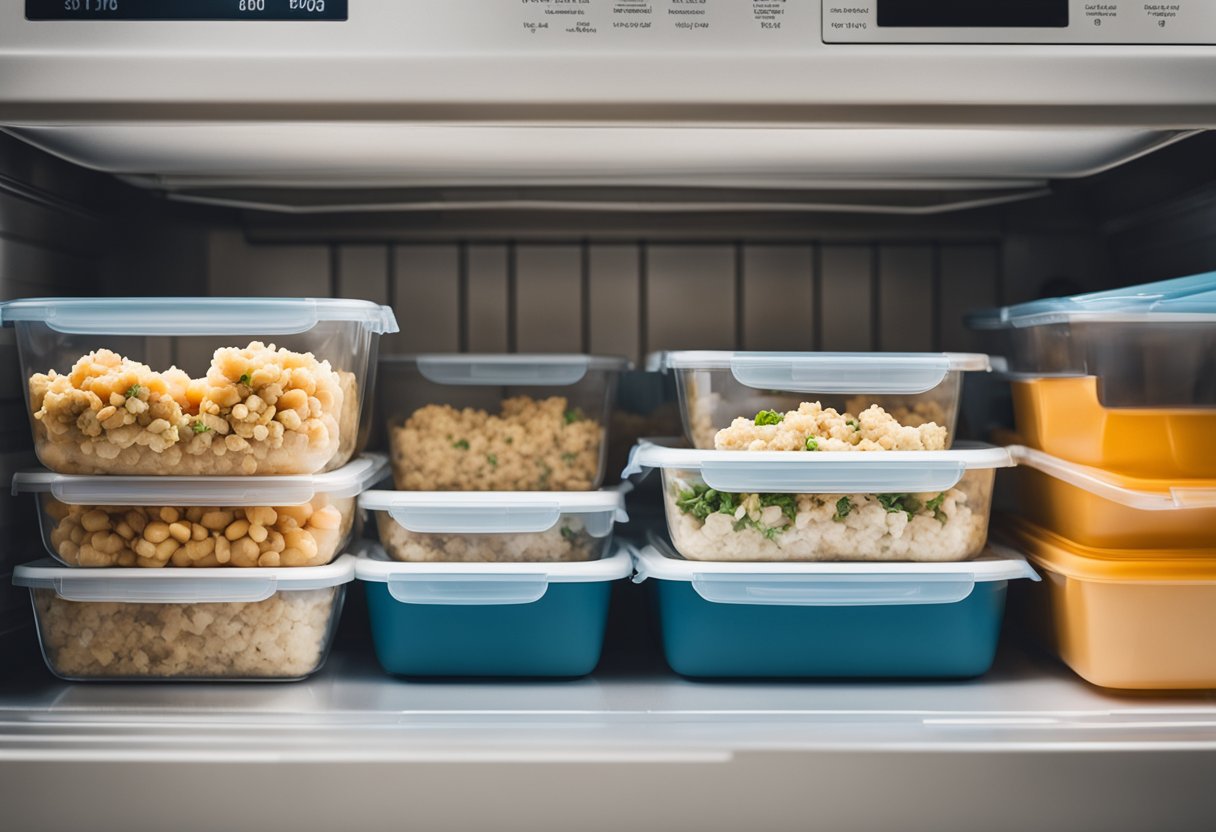
When it comes to storing leftover stuffing, it’s important to do it safely to avoid any risk of foodborne illness. Here are some tips to keep in mind:
Cooling Down Before Storage
Before storing leftover stuffing, it’s important to let it cool down to room temperature. This will prevent any moisture buildup in the container, which can lead to bacterial growth. Once the stuffing has cooled down, transfer it to an airtight container.
Refrigeration vs. Freezing
If you’re planning to eat the leftover stuffing within a few days, you can store it in the refrigerator. Make sure to use an airtight container to keep it fresh. However, if you’re not planning to eat it within a few days, it’s best to freeze it. Frozen stuffing can last up to 3 months.
When freezing leftover stuffing, make sure to divide it into smaller portions so that it can freeze faster and thaw more easily. You can use freezer bags or airtight containers for this purpose.
Label the container with the date of storage so that you can keep track of how long it’s been in the freezer.
It’s important to note that while freezing can help preserve the quality of the stuffing, it won’t eliminate the risk of foodborne illness. Make sure to reheat the stuffing to an internal temperature of 165°F to kill any bacteria that may be present.
By following these simple tips, you can safely store leftover stuffing and enjoy it later without any worries.
Frequently Asked Questions
What is the best method to reheat stuffing on the stove?
The best way to reheat stuffing on the stove is to use a medium heat and add a little bit of chicken or vegetable broth to the stuffing to keep it moist.
Stir the stuffing frequently to ensure it heats evenly. You can also add more veggies, seasonings, or broth to enhance the flavor and texture of the stuffing.
Can stuffing be reheated in an air fryer effectively?
Yes, stuffing can be reheated in an air fryer effectively. Preheat the air fryer to 350°F and place the stuffing in the basket.
Cook the stuffing for 5-7 minutes, stirring occasionally to ensure it heats evenly. The air fryer will help to keep the stuffing crispy on the outside and moist on the inside.
What are the steps to properly reheat cornbread dressing?
To properly reheat cornbread dressing, preheat the oven to 350°F. Place the cornbread dressing in an oven-safe dish and add a splash of chicken or vegetable broth to keep it moist.
Cover the dish with foil and bake for 20-25 minutes, or until the center of the cornbread dressing is heated through.
How can stuffing be kept warm after reheating?
Stuffing can be kept warm after reheating by placing it in a slow cooker on the “warm” setting. You can also cover the stuffing with foil and place it in a warm oven until ready to serve.
What techniques can be used to moisten dry stuffing after reheating?
To moisten dry stuffing after reheating, add a little bit of chicken or vegetable broth to the stuffing and stir until it is evenly distributed. You can also drizzle melted butter over the stuffing to add moisture and flavor.
Is it safe to consume stuffing cold, or does it need to be reheated?
It is safe to consume stuffing cold, but it is recommended to reheat it to an internal temperature of 165°F to ensure it is safe to eat. Reheating the stuffing also helps to enhance the flavor and texture of the dish.



